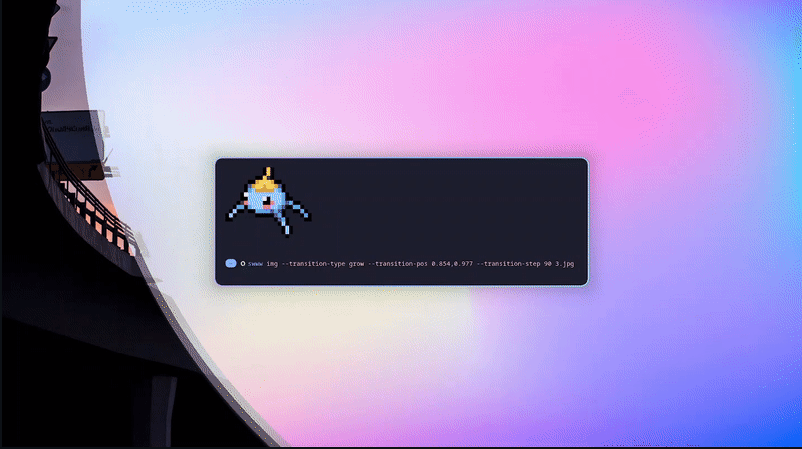Swww
Last updated: 2024, Mon Jun 3rd at 13:54 CDT
Efficient animated wallpaper daemon for wayland that allows you to change the wallpaper at runtime.


To Install: #
Preferred method
In most cases its best to compile it
Only available in the AUR
AUR: swww
sudo zypper in swww
Build Instructions #
Info
Dependencies may be different than the names listed based on the distro.
Dependencies #
- a compositor that implements:
- wlr-layer-shell (typically wlroots based compositors)
- xdg-output
- lz4 (for compressing frames when animating)
- Up to date stable rustccompiler and cargo
Rust
Rust general-purpose programming language that emphasizes performance. It is a lower-level general-purpose programming language featuring memory safety, thread safety, cross-platform...
(specifically, MSRV is 1.70.0)Rust
Rust general-purpose programming language that emphasizes performance. It is a lower-level general-purpose programming language featuring memory safety, thread safety, cross-platform...
Build #
To build:
git clone https://github.com/LGFae/swww
cd swww
cargo build --release
Then, put both binaries Fish is a friendly smart shell. This includes features like syntax highlighting, autosuggest-as-you-type, and tab completions that just work. Fish...target/release/swww and target/release/swww-daemon in your path. Optionally, autocompletion scripts for bash, zsh, FishFish
completions directory.
Essentials #
Start by initializing the daemon:
swww init
Then, simply pass the image you want to display:
swww img <path/to/img>
# You can also specify outputs:
swww img -o <outputs> <path/to/img>
# Control how smoothly the transition will happen and/or it's frame rate
# For the step, smaller values = more smooth. Default = 20
# For the frame rate, default is 30.
swww img <path/to/img> --transition-step <1 to 255> --transition-fps <1 to 255>
# There are also many different transition effects:
swww img <path/to/img> --transition-type center
# Note you may also control the above by setting up the SWWW_TRANSITION_FPS,
# SWWW_TRANSITION_STEP, and SWWW_TRANSITION environment variables.
# To see all options, run
swww img --help
If you would like to know the valid values for <outputs>, you can query the daemon. This will also tell you what the current image being displayed is, as well as the dimensions detected for the outputs. If you need more detailed information, I would recommend using
wlr-randr.
swww query
Finally, to stop the daemon, kill it:
swww kill
For a more complete description, run swww --help or swww <subcommand>--help. Finally, to get a feel for what you can do with some shell scripting, check out the
example_scripts folder. It can help you get started.
Extras #
Note
In order to generate the man pages, you must have
scdocinstalled. Run
If you compiled swww and want man pages, go into the cloned repository cd swww or if you are already in it just run
./doc/gen.sh
The man pages will be in doc/generated. To install them, you must move them to to the appropriate location in your system. You should be able to figure out where that is by running manpath.